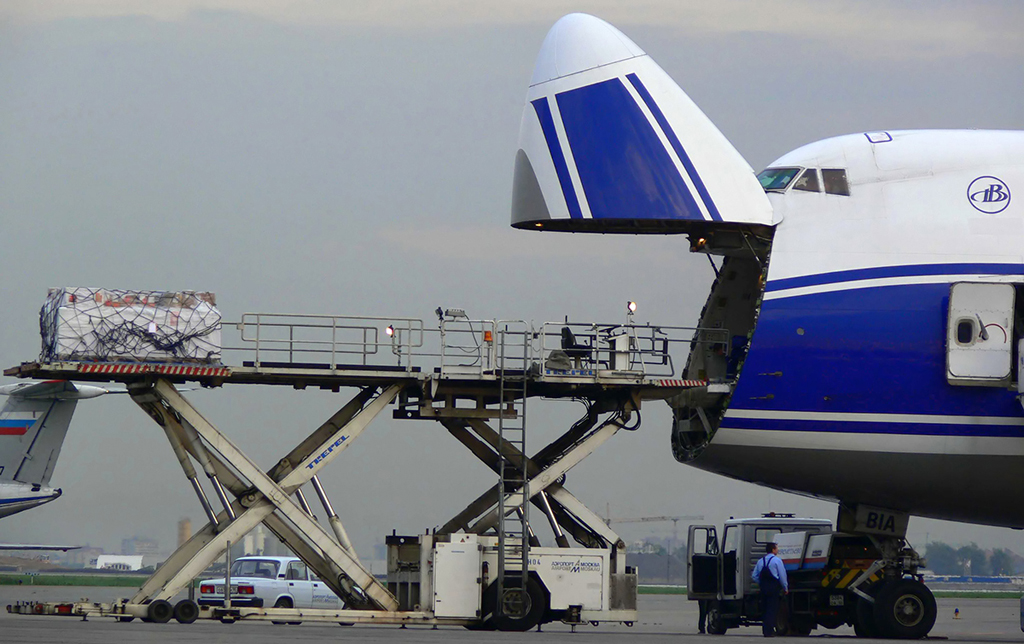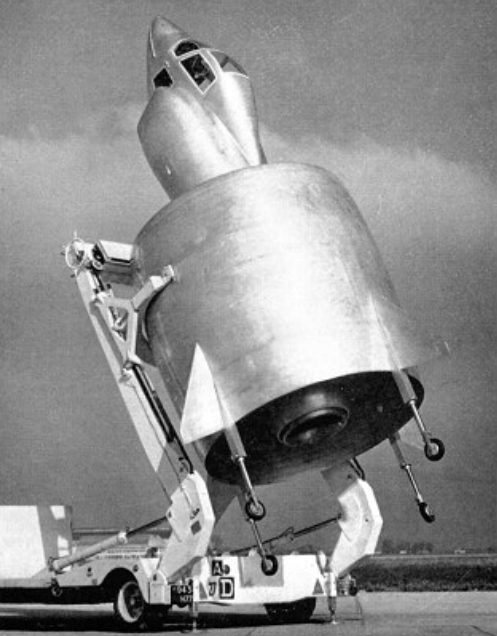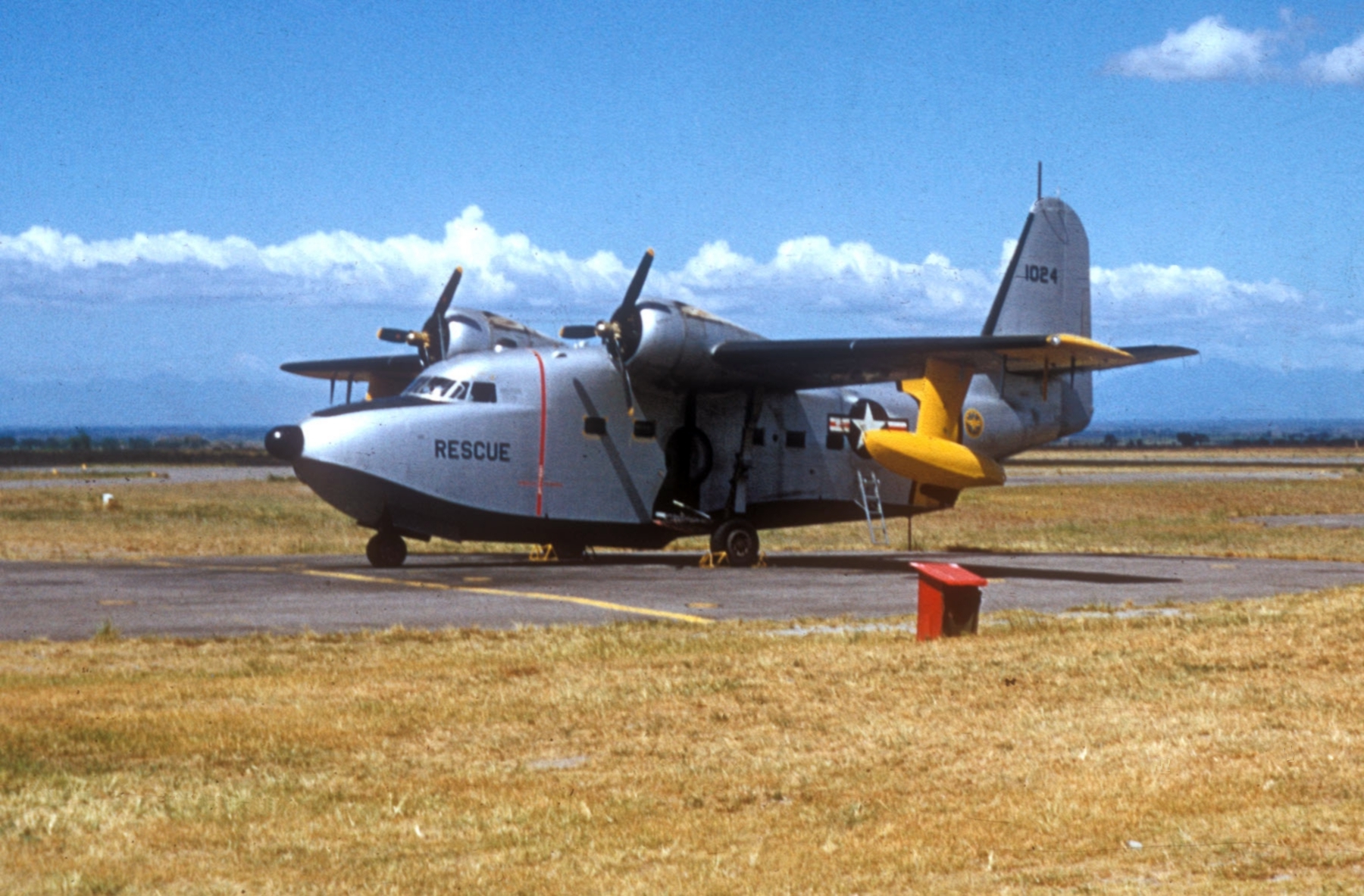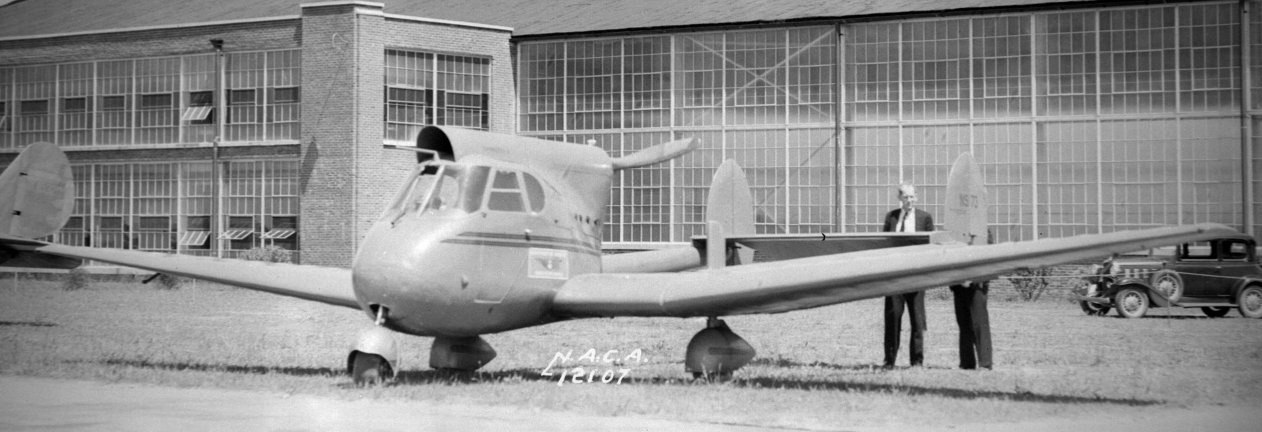|
Hiller Air Museum
The Hiller Aviation Museum is an aircraft history museum located at the San Carlos Airport in San Carlos, California. The museum was founded by Stanley Hiller in June 1998. and is endowed by members of the Hiller family. It specializes in Northern California aircraft history and helicopter history. The museum is also an affiliate within the Smithsonian Affiliations program. Permanent exhibits This museum has more than 50 aerospace vehicles along with companion descriptive displays concerning the history of flight. Some of the exhibits include: * The Hiller XH-44 (replica), first coaxial helicopter to fly in the US * The Hiller Flying Platform, an experimental aircraft from 1955 to give a single passenger low-altitude flight * The front 45 feet of a Boeing 747 *Fairchild 24 *Stearman-Hammond Y-1, a mid-1930s trainer also used as a remotely piloted aircraft * The Rutan Defiant, Burt Rutan's personal homebuilt airplane. * A Grumman HU-16 Albatross that was the first to circumnavi ... [...More Info...] [...Related Items...] OR: [Wikipedia] [Google] [Baidu] |
Rutan Long-EZ
The Rutan Model 61 Long-EZ is a tandem 2-seater homebuilt aircraft designed by Burt Rutan's Rutan Aircraft Factory. The Long-EZ has a canard layout, a swept wing with wingtip rudders, and a pusher engine and propeller. The tricycle landing gear has fixed main wheels with streamlined spats and a retractable nosewheel. Its predecessor was the VariEze, plans for which were first available to homebuilders in 1976. The prototype Long-EZ, N79RA, first flew on June 12, 1979. Design The Long-EZ was a scaled-up redesign of the VariEze predecessor, allowing for the use of readily available Lycoming aircraft engines instead of the Volkswagen-derived engines or hard-to-find small Continentals for which the VariEze was designed. Changes from the VariEze included a larger main wing with modified Eppler 1230 airfoil and less sweep, larger strakes containing more fuel and baggage storage, and a slightly wider cabin. The canard uses the same GU25-5(11)8 airfoil as the VariEze. Plans were o ... [...More Info...] [...Related Items...] OR: [Wikipedia] [Google] [Baidu] |
Boeing 747
The Boeing 747 is a large, long-range wide-body airliner designed and manufactured by Boeing Commercial Airplanes in the United States between 1968 and 2022. After introducing the 707 in October 1958, Pan Am wanted a jet times its size, to reduce its seat cost by 30%. In 1965, Joe Sutter left the 737 development program to design the 747, the first twin-aisle airliner. In April 1966, Pan Am ordered 25 Boeing 747-100 aircraft and in late 1966, Pratt & Whitney agreed to develop the JT9D engine, a high-bypass turbofan. On September 30, 1968, the first 747 was rolled out of the custom-built Everett Plant, the world's largest building by volume. The first flight took place on February 9, 1969, and the 747 was certified in December of that year. It entered service with Pan Am on January 22, 1970. The 747 was the first airplane dubbed "Jumbo Jet", the first wide-body airliner. The 747 is a four-engined jet aircraft, initially powered by Pratt & Whitney JT9D turbofan engin ... [...More Info...] [...Related Items...] OR: [Wikipedia] [Google] [Baidu] |
Museums In San Mateo County, California
A museum ( ; plural museums or, rarely, musea) is a building or institution that cares for and displays a collection of artifacts and other objects of artistic, cultural, historical, or scientific importance. Many public museums make these items available for public viewing through exhibits that may be permanent or temporary. The largest museums are located in major cities throughout the world, while thousands of local museums exist in smaller cities, towns, and rural areas. Museums have varying aims, ranging from the conservation and documentation of their collection, serving researchers and specialists, to catering to the general public. The goal of serving researchers is not only scientific, but intended to serve the general public. There are many types of museums, including art museums, natural history museums, science museums, war museums, and children's museums. According to the International Council of Museums (ICOM), there are more than 55,000 museums in 202 countries ... [...More Info...] [...Related Items...] OR: [Wikipedia] [Google] [Baidu] |
Aerospace Museums In California
Aerospace is a term used to collectively refer to the atmosphere and outer space. Aerospace activity is very diverse, with a multitude of commercial, industrial and military applications. Aerospace engineering consists of aeronautics and astronautics. Aerospace organizations research, design, manufacture, operate, or maintain both aircraft and spacecraft. The beginning of space and the ending of the air is considered as 100 km (62 mi) above the ground according to the physical explanation that the air pressure is too low for a lifting body to generate meaningful lift force without exceeding orbital velocity. Overview In most industrial countries, the aerospace industry is a cooperation of the public and private sectors. For example, several states have a civilian space program funded by the government, such as National Aeronautics and Space Administration in the United States, European Space Agency in Europe, the Canadian Space Agency in Canada, Indian Space Research ... [...More Info...] [...Related Items...] OR: [Wikipedia] [Google] [Baidu] |
List Of Aerospace Museums
This is a list of aviation museums and museums that contain significant aerospace-related exhibits throughout the world. The aviation museums are listed alphabetically by country and their article name. Afghanistan * OMAR Mine Museum, Kabul - includes a large collection of Soviet aircraft Argentina * , Bahía Blanca * Museo Nacional de Aeronáutica de Argentina, Morón Armenia * Civil Aviation Museum, Zvartnots Australia Australian Capital Territory * Australian War Memorial, Canberra New South Wales * Australian Aviation Museum, Bankstown * Camden Museum of Aviation, Camden * Luskintyre Aviation Flying Museum, Hunter Region * Temora Aviation Museum, Temora * Fighter World Museum, RAAF Williamtown * Narromine Aviation Museum, Narromine * Historical Aircraft Restoration Society, Illawarra Regional Airport, Albion Park Rail * Fleet Air Arm Museum, Nowra * Powerhouse Museum, Sydney * RAAF Wagga Heritage Centre, Wagga Wagga Northern Territory * Central Australi ... [...More Info...] [...Related Items...] OR: [Wikipedia] [Google] [Baidu] |
Coleopter
A coleopter is a type of VTOL aircraft design that uses a ducted fan as the primary fuselage of the entire aircraft. Generally they appear to be a large barrel-like extension at the rear, with a small cockpit area suspended above it. Coleopters are generally designed as tail-sitters. The term is an anglicisation of the French '' coléoptère'' "beetle" after the first actual implementation of this design, the SNECMA Coléoptère of the mid-1950s. The first design of an aircraft clearly using the coleopter concept was developed during World War II. From 1944 on, the Luftwaffe was suffering from almost continual daytime attacks on its airfields and was finding it almost impossible to conduct large-scale operations. Their preferred solution was to introduce some sort of VTOL interceptor that could be launched from any open location, and there were many proposals for such a system. Heinkel conducted a series of design studies as part of their Heinkel Wespe and Heinkel Lerche program ... [...More Info...] [...Related Items...] OR: [Wikipedia] [Google] [Baidu] |
NASA AD-1
The NASA AD-1 was both an aircraft and an associated flight test program conducted between 1979 and 1982 at the NASA Dryden Flight Research Center, Edwards California, which successfully demonstrated an aircraft wing that could be pivoted obliquely from zero to 60 degrees during flight. The unique oblique wing was demonstrated on a small, subsonic jet-powered research aircraft called the AD-1 (Ames-Dryden-1). The aircraft was flown 79 times during the research program, which evaluated the basic pivot-wing concept and gathered information on handling qualities and aerodynamics at various speeds and degrees of pivot. Project background The first known oblique wing design was the Blohm & Voss P.202, proposed by Richard Vogt in 1942. The oblique wing concept was later promoted by Robert T. Jones, an aeronautical engineer at NASA's Ames Research Center, Moffett Field, California. Analytical and wind tunnel studies Jones initiated at Ames indicated that a transport-size oblique-wi ... [...More Info...] [...Related Items...] OR: [Wikipedia] [Google] [Baidu] |
Grumman HU-16 Albatross
The Grumman HU-16 Albatross is a large, twin–radial engined amphibious aircraft, amphibious seaplane that was used by the United States Air Force (USAF), the U.S. Navy (USN), and the U.S. Coast Guard (USCG), primarily as a search and rescue (SAR) aircraft. Originally designated as the SA-16 for the USAF and the JR2F-1 and UF-1 for the USN and USCG, it was redesignated as the HU-16 in 1962. A new build G-111T Albatross with modern avionics and engines was proposed in 2021 with production in Australia to commence in 2025. Design and development An improvement of the design of the Grumman Mallard, the Albatross was developed to land in open-ocean situations to accomplish rescues. Its deep-V hull cross-section and keel length enable it to land in the open sea. The Albatross was designed for optimal seas, and could land in more severe conditions, but required JATO (jet-assisted takeoff, or simply booster rockets) for takeoff in seas or greater. Operational history Most Albatros ... [...More Info...] [...Related Items...] OR: [Wikipedia] [Google] [Baidu] |
Burt Rutan
Elbert Leander "Burt" Rutan (; born June 17, 1943) is a retired American aerospace engineer and entrepreneur noted for his originality in designing light, strong, unusual-looking, and energy-efficient air and space craft. He designed the record-breaking Voyager, which in 1986 was the first plane to fly around the world without stopping or refueling, and the Virgin Atlantic GlobalFlyer, which in 2006 set the world record for the fastest (342 mph/551 km/h in 67 hours) and longest (25,766 miles/41,466 km) nonstop non-refueled circumnavigation flight in history. In 2004, Rutan's sub-orbital spaceplane design SpaceShipOne became the first privately funded spacecraft to enter the realm of space, winning the Ansari X-Prize that year for achieving the feat twice within a two-week period. With his VariEze and Long-EZ designs, which first flew in 1975 and 1979 respectively, Rutan is responsible for helping popularize both the canard configuration and the use of moldless c ... [...More Info...] [...Related Items...] OR: [Wikipedia] [Google] [Baidu] |
Rutan Defiant
The Rutan Model 40 Defiant is a four-seat, twin-engine homebuilt aircraft with the engines in a push-pull configuration. It was designed by aerospace engineer Burt Rutan for the Rutan Aircraft Factory. ] Development The prototype Defiant, N78RA, was first flown on 30 June 1978. It had been intended as a proof-of-concept of a very safe light twin design, requiring little trim change and no pilot action in case of engine failure, and with good single engine performance. A comparison of the Defiant single engine climb rate with a Gulfstream American GA-7 Cougar, Gulfstream Cougar had shown about vs per minute at low altitude with both aircraft cleaned up. The prototype is now owned by the Hiller Aviation Museum. In 1979 the Rutan Aircraft Factory announced they would proceed with certification of a Defiant-based light twin. Adequate financing was not secured for this project, and the design was modified for homebuilt construction as the Model 74, with the second aircraft (b ... [...More Info...] [...Related Items...] OR: [Wikipedia] [Google] [Baidu] |
Stearman-Hammond Y-1
The Stearman-Hammond Y-1 was a 1930s American utility monoplane built by the Stearman-Hammond Aircraft Corporation and evaluated by the United States Navy and the British Royal Air Force. Development In the early 1930s Dean Hammond designed the Hammond Model Y, a low-wing monoplane twin-boom pusher monoplane. Hammond cooperated with the aircraft designer Lloyd Stearman to develop the type for production. They formed the Stearman-Hammond Aircraft Corporation in 1936 to build the aircraft as the Stearman-Hammond Y-1. The first aircraft was powered by a 125 hp (93 kW) Menasco C-4 piston engine driving a pusher propeller. The performance was not impressive so it was re-engined with a 150 hp (112 kW) Menasco C-4S and re-named the Y-1S. Although designed to be easy to fly the high price meant only 20 aircraft were produced. The aircraft had no rudder as such, the tailplane fins being adjustable but fixed in flight. Turning was by differential aileron and elevator al ... [...More Info...] [...Related Items...] OR: [Wikipedia] [Google] [Baidu] |
Fairchild 24
The Fairchild Model 24, also called the Fairchild Model 24 Argus and UC-61 Forwarder, is a four-seat, single-engine monoplane light transport aircraft designed by the Fairchild Aviation Corporation in the 1930s. It was adopted by the United States Army Air Corps as UC-61 and also by the Royal Air Force. The Model 24 was itself a development of previous Fairchild models and became a successful civil and military utility aircraft. Design and development Fairchild Aircraft was hit hard by the Great Depression in the early 1930s as airline purchases disappeared. Consequently, the company attention turned to developing a reliable and rugged small aircraft for personal and business use. The Fairchild 22 became somewhat of a hit and led directly to the new and much improved Model 24 which gained rapid popularity in the early 1930s, noted for its pleasant handling characteristics and roomy interior. Having adapted many components from the automotive industry (expansion-shoe brakes and r ... [...More Info...] [...Related Items...] OR: [Wikipedia] [Google] [Baidu] |



.jpg)





